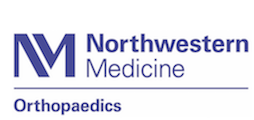|
|

|
« Back
Have you ever heard of shock therapy for back pain? Do they shock the brain or the back? How is it done?
|
|
You may be referring to a form of therapy that causes oscillating or vibrational pressure at low frequencies to the muscles on either side of the spine. The type of shock therapy to the brain is something different altogether. Shock wave therapy for the back/spine is also called vibrotherapy. This is a technique used more often outside the United States.
In the United States, you are more likely to find ultrasound (another form of vibrational frequencies using sound waves) in use. The intention behind both of these vibrational therapies is to increase blood circulation, improve soft tissue stretch, reduce pain and stiffness, and speed up healing. Other potential effects of shock wave and ultrasound therapy may include enhanced cellular metabolism, muscle relaxation, and increased trunk/spinal motion.
But before you get too excited about this as a potential new and improved treatment, you should be aware of a recent report from Spain. Researchers from Spain take a look at the effectiveness of shock wave therapy and ultrasound in the treatment of both acute and chronic back pain.
They conducted the study as a systematic review. This means they searched all the currently published literature looking for studies on either of these two treatment methods. They found a total of 13 studies but only four randomly controlled trials.
The reported results then are based on the experiences of 252 patients. Various treatment methods were used and compared with ultrasound and shock wave therapy such as lumbar traction, low power laser, electrical stimulation, and spinal manipulation. Here's a summary of the results:
Patients with new (acute) back and leg pain had similar results with ultrasound, traction, and laser (see the next comment).
None of these three treatments were effective for low back pain (with or without leg pain).
It is possible that the "similar" results were nothing more than patients getting better through the natural healing process.
Patients with chronic back pain (no leg pain) responded best to spinal manipulation. Shock wave and electrical therapy had about the same (minimal) results.
None of the studies looked at cost-effectiveness so there's no word on that.
Also none of the studies mentioned adverse effects for any of the treatments. There may have been some problems or complications but we don't know that on the basis of this review.
This review was an important publication because ultrasound is still a common modality used in the treatment of back pain. Primary care physicians and chiropractors recommend its use. Physical therapists around the world still use it despite all the evidence (including the results of this study) that show it is not effective.
The authors of this systematic review repeat what has said before. Not only should shock wave therapy and ultrasound NOT be used to treat low back pain (acute, chronic, with or without leg pain) but studies using these modalities should not continue to be funded. With over 200 different treatments currently available, it would make more sense to find successful treatments that are also cost-effective. Future studies should be focused in this direction rather than re-studying something that has been disproven so thoroughly.
|
References:
|
|
|
« Back
|
|
|
|
*Disclaimer:*The information contained herein is compiled from a variety of sources. It may not be complete or timely. It does not cover all diseases, physical conditions, ailments or treatments. The information should NOT be used in place of visit with your healthcare provider, nor should you disregard the advice of your health care provider because of any information you read in this topic. |
 | All content provided by eORTHOPOD® is a registered trademark of Mosaic Medical Group, L.L.C.. Content is the sole property of Mosaic Medical Group, LLC and used herein by permission. |
|
